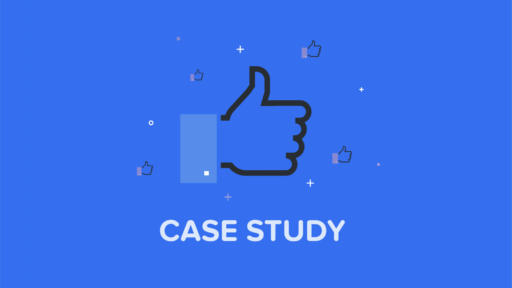Social media automation is no longer optional for marketing professionals managing multiple platforms. It’s how you stay visible without burning out. But the real challenge isn’t finding tools to automate social media posts – it’s keeping your brand voice authentic whilst doing so.
The solution lies in strategic automation, not robotic scheduling. You need systems that enhance your presence without making every post feel like it came from a template. This means choosing tools with smart features, setting up content frameworks that preserve your unique voice, and knowing exactly when to step in manually.
This guide explores how to select and implement social media automation tools that save time whilst maintaining genuine connections. You’ll discover which features matter most, how to structure your content calendar for authenticity, and practical strategies to balance efficiency with engagement.
Understanding Social Media Automation
Social media automation uses software to handle repetitive posting tasks across platforms. These tools schedule content, manage publishing queues, and handle routine engagement activities that would otherwise consume hours of your day.
The core functionality involves three key processes. First, content scheduling allows you to plan posts days or weeks ahead. Second, automated publishing pushes content live at optimal times without manual intervention. Third, cross-posting capabilities share content across Facebook, Instagram, Twitter, LinkedIn, and other networks simultaneously.
Modern social media management platforms go beyond simple scheduling. They incorporate content calendars for visual planning, analytics dashboards for performance tracking, and team collaboration features for approval workflows. Some now include AI-powered tools that suggest posting times, generate caption variations, and curate relevant content from across the web.
The distinction between automation and authenticity matters here. Automation handles the mechanics of publishing. Authenticity comes from your content strategy, voice, and willingness to engage personally when it counts. The two work together when implemented thoughtfully.
The Efficiency Gains from Automation
Time savings represent the most immediate benefit of social media automation. SocialBee’s AI-powered scheduling features are reported to save users ‘dozens of hours every month’, highlighting the significant time-saving potential of automation.
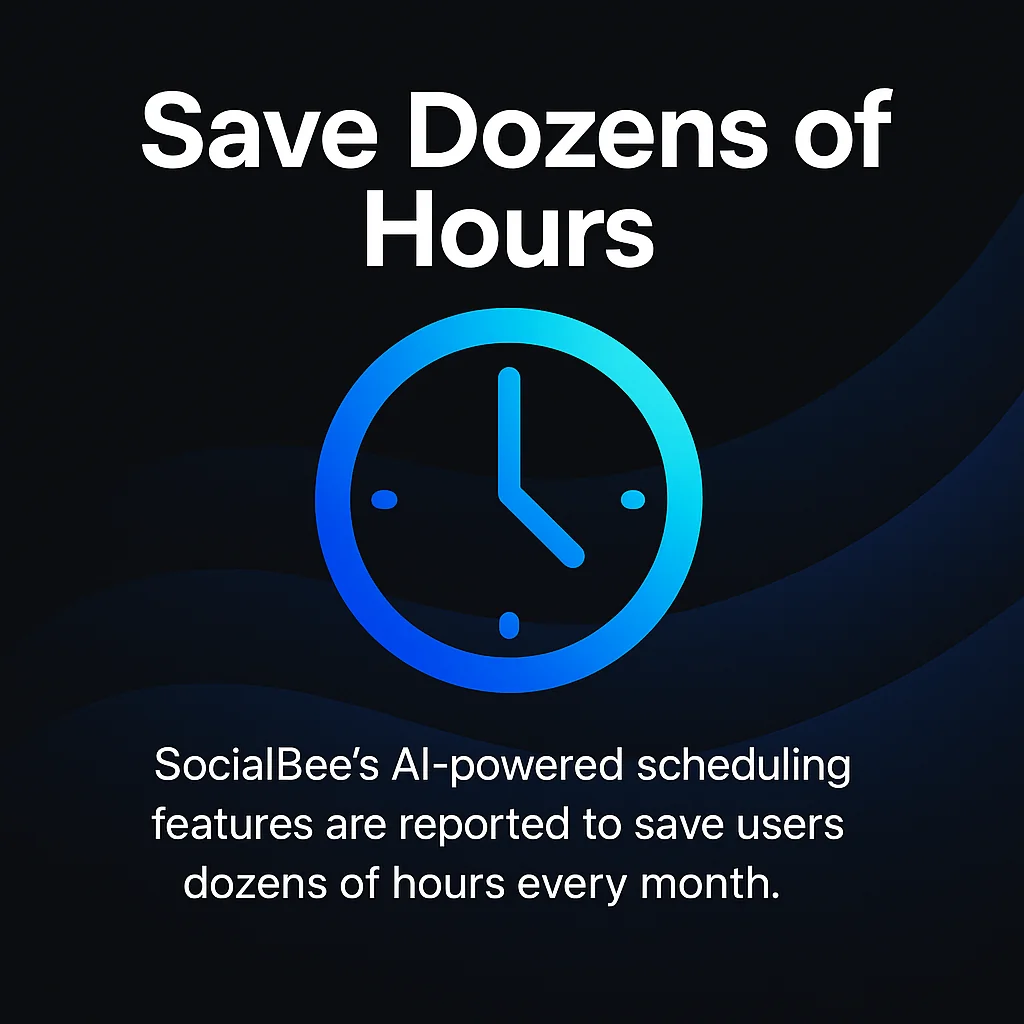
Beyond raw hours saved, automation creates consistency. Your content appears on schedule regardless of meetings, deadlines, or time zones. This regular presence builds audience expectations and maintains visibility during busy periods when manual posting would slip.
Productivity Benefits for Marketing Teams
Bulk scheduling capabilities transform how teams work. Instead of logging into platforms multiple times daily, you batch-create content during focused sessions. This reduces context-switching and allows for better quality control before anything goes live.
Analytics and reporting features provide insights without manual data collection. You track engagement patterns, identify top-performing content, and adjust strategies based on actual metrics rather than guesswork. Most platforms consolidate data across networks, giving you a comprehensive view of social media performance.
Team collaboration improves significantly with automation tools. Content approval workflows ensure brand consistency, whilst role-based permissions protect account security. Multiple team members can work simultaneously without overwriting each other’s efforts or accidentally publishing draft content.
Strategic Advantages for Content Planning
Content calendars enable strategic thinking about your social media presence. You spot gaps in your posting schedule, plan campaigns around product launches or events, and maintain thematic consistency across weeks or months.
The ability to schedule posts during off-hours expands your reach. Your content goes live when your audience is most active, even if that’s 3 AM your time. This global reach matters for businesses with international audiences or those targeting specific demographics with distinct browsing patterns.
Automation also supports content repurposing. You can schedule evergreen content to reappear at intervals, maximising the value of quality posts without constantly creating new material. This works particularly well for educational content, tips, and resources that remain relevant over time.
Essential Features in Social Media Automation Tools
Effective social media automation requires specific capabilities beyond basic scheduling. The right feature set determines whether a tool enhances or undermines your authentic presence.
Multi-Platform Support and Publishing
Cross-posting functionality is non-negotiable for efficient social media management. Your tool should support Facebook, Instagram, Twitter, LinkedIn, and ideally TikTok, Pinterest, and YouTube. Each platform has unique requirements – image dimensions, character limits, hashtag conventions – that quality tools handle automatically.
Buffer is known for its simple calendar interface and smart queues, making it ideal for small teams needing consistent posting schedules. This approach lets you maintain presence across platforms without juggling separate tools for each network.
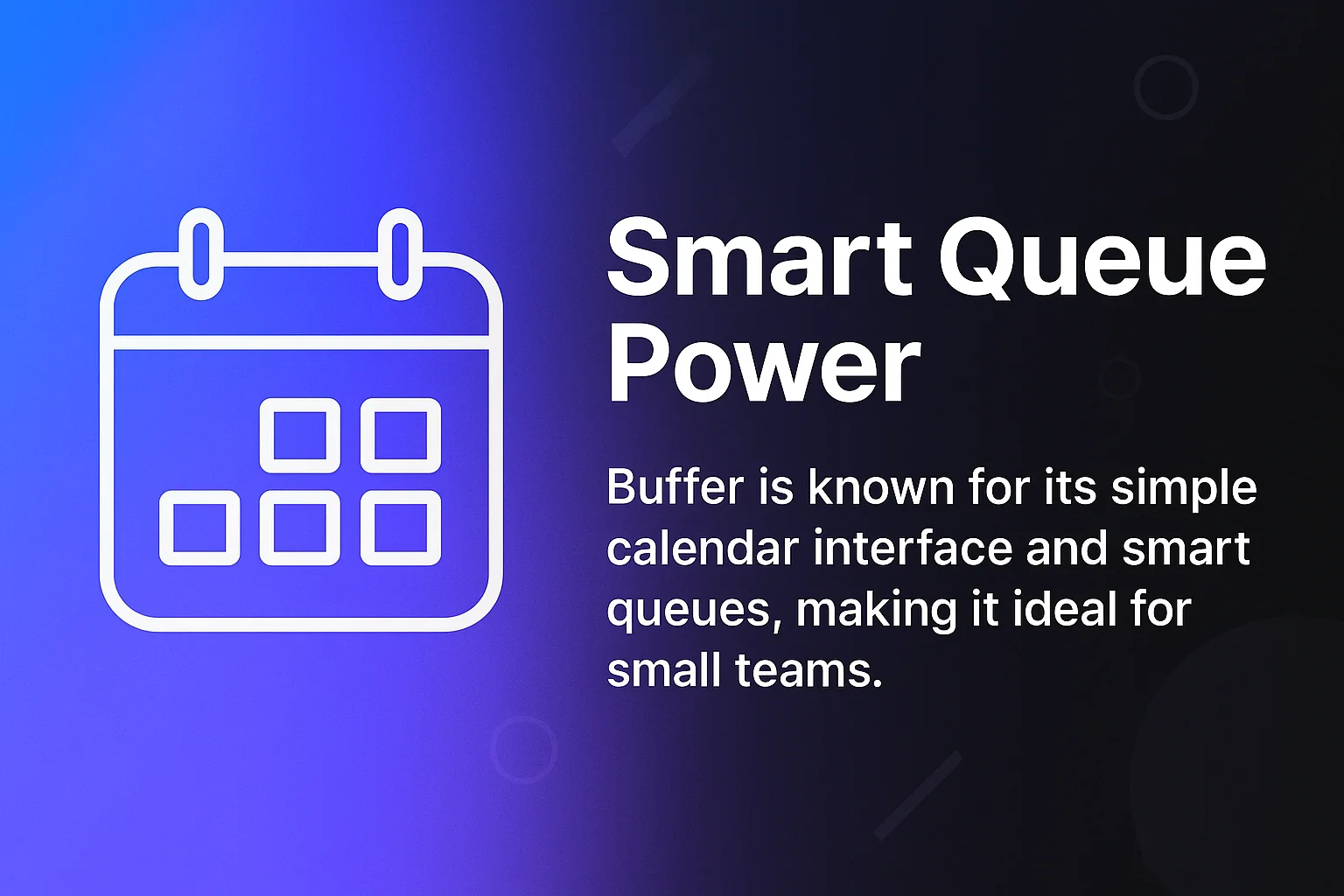
Look for platform-specific optimisation features. Instagram requires special attention to visual content and first-comment capabilities for links. LinkedIn benefits from native document sharing. Twitter needs thread management. Tools that understand these nuances help maintain platform-appropriate authenticity.
Content Calendar and Queue Management
Visual content calendars show your posting schedule at a glance. Drag-and-drop interfaces make rescheduling intuitive. Colour-coding by content type or campaign helps you spot patterns and maintain variety.
Smart queue systems automatically fill time slots based on your rules. You set posting frequency and optimal times, then add content to the queue. The system handles distribution, ensuring consistent presence without manually assigning every post to a specific datetime.
Bulk uploading accelerates content creation. Upload multiple posts at once via CSV files or spreadsheet integrations. This matters when planning campaign content or repurposing blog articles into social posts.
Analytics and Performance Tracking
Comprehensive analytics show which content resonates with your audience. Track engagement rates, click-throughs, follower growth, and reach across all connected platforms. Export capabilities let you create custom reports for stakeholders or clients.
Best-time-to-post recommendations use your historical data to identify when your specific audience is most active. This beats generic advice about optimal posting times because it reflects your actual follower behaviour.
Competitive analysis features let you benchmark against similar accounts. See what content types and posting frequencies work in your industry. This informs strategy without requiring manual tracking of competitor accounts.
Team Collaboration Capabilities
Approval workflows prevent mistakes. Content moves through stages – draft, review, approved, scheduled – with assigned responsibilities at each step. This protects brand voice whilst enabling team efficiency.
Role-based permissions control who can publish, approve, or merely draft content. This matters for agencies managing multiple client accounts or brands with distributed marketing teams.
Collaboration features like internal notes and revision histories keep teams aligned. Everyone sees why changes were made and what feedback informed content decisions.
Engagement Management Tools
Tools like Sprout Social use AI to sort messages by importance and automate responses, further reducing manual workload and response times. Social inbox functionality consolidates comments, mentions, and messages from all platforms into a single stream.
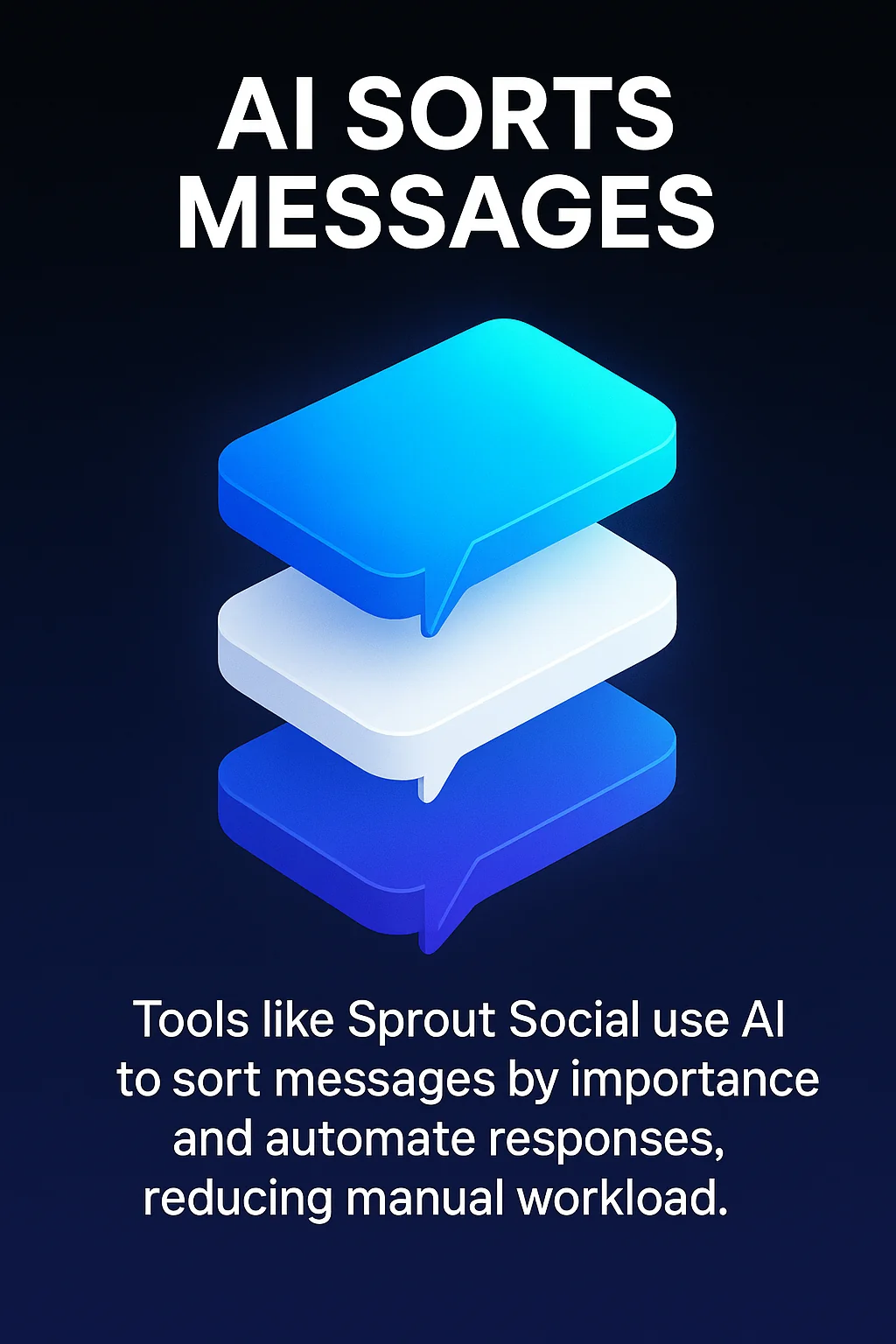
Automated responses handle common questions whilst maintaining authenticity. Create templates for frequently asked questions, then personalise before sending. This speeds response times without sounding robotic.
Monitoring capabilities alert you to important conversations. Set up keyword tracking for your brand, products, or industry terms. Jump into relevant discussions quickly, maintaining authentic engagement where it matters most.
Leading Social Media Automation Tools for 2025
The automation tool market offers options for every team size and budget. Choosing the right platform depends on your specific needs, technical comfort level, and content strategy.
Buffer: Best for Simplicity and Consistency
Buffer excels at straightforward scheduling with minimal learning curve. The intuitive interface makes it accessible for individuals and small teams who need reliable posting without complexity.
The smart queue system is Buffer’s standout feature. Define your ideal posting schedule once, then add content to the queue. Buffer automatically slots posts into the next available time slot. This removes the tedious task of choosing specific datetimes for every post.
Analytics provide essential metrics without overwhelming detail. You see what’s working at a glance. The free plan supports three social channels and ten scheduled posts, making it viable for testing automation before committing to paid plans.
Buffer handles Facebook, Instagram, Twitter, LinkedIn, Pinterest, and TikTok. Each platform gets optimised formatting, though some advanced features like Instagram Stories require the paid tiers. The browser extension lets you add content from anywhere on the web.
Hootsuite: Best for Comprehensive Management
Hootsuite offers enterprise-grade features for teams managing complex social media operations. The platform combines scheduling, monitoring, analytics, and team collaboration in one comprehensive system.
Bulk scheduling shines in Hootsuite. Upload hundreds of posts via CSV files, perfect for campaign planning or content repurposing at scale. The content library stores approved assets, maintaining brand consistency across team members.
Social listening tools track brand mentions, competitor activity, and industry conversations. Custom streams monitor multiple keywords simultaneously, helping you spot engagement opportunities and emerging trends.
The platform supports over 20 social networks, including less common platforms like YouTube and Reddit. Advanced analytics include sentiment analysis and customisable reports. The learning curve is steeper than simpler tools, but the capabilities justify the investment for larger teams.
SocialBee: Best for Content Categorisation
SocialBee uses category-based scheduling to maintain content variety. You assign posts to categories – promotional, educational, curated content, etc. – then set posting frequency for each category. The system automatically rotates content types, preventing your feed from becoming repetitive.
Content recycling features let evergreen posts reappear at set intervals. Educational tips, resource links, and timeless advice get maximum value without manual rescheduling. You control recycling frequency and can pause or expire content as needed.
The AI writing assistant generates post variations from your original content. Input a blog article URL and receive multiple social post options with relevant hashtags. This accelerates content creation whilst maintaining your core message.
SocialBee supports major platforms including Facebook, Instagram, Twitter, LinkedIn, Pinterest, and TikTok. Workspaces allow agencies to manage multiple client accounts with separate billing and team access.
Sprout Social: Best for Analytics and Engagement
Sprout Social combines powerful automation with deep analytics and engagement tools. The unified inbox consolidates messages, comments, and mentions across all platforms, streamlining response management.
Publishing tools include optimal send time recommendations based on your audience data. The visual content calendar provides drag-and-drop scheduling with clear campaign views. ViralPost automatically publishes content when your audience is most active.
Analytics dashboards offer presentation-ready reports with customisable metrics. Track ROI, measure campaign performance, and benchmark against competitors. The data export options integrate with other business intelligence tools.
Collaboration features include task assignment, approval workflows, and asset libraries. Teams coordinate efficiently without external communication tools. The platform supports Facebook, Instagram, Twitter, LinkedIn, Pinterest, YouTube, and TikTok.
CoSchedule: Best for Content Marketing Integration
CoSchedule connects social media automation with broader content marketing workflows. The marketing calendar shows blog posts, email campaigns, and social content in one unified view.
ReQueue automatically fills gaps in your social schedule with top-performing content. The system identifies your best posts and reshares them during empty time slots. This maintains consistent presence without constant content creation.
The Social Campaign feature groups related posts across platforms. Plan product launches or event promotions with coordinated messaging. Templates accelerate campaign setup for recurring initiatives.
CoSchedule integrates with WordPress, allowing direct blog-to-social publishing. Write a post, and the tool suggests social messages with optimised timing. The platform supports major networks and offers team collaboration features suitable for marketing departments.
Comparing Pricing and Plans
Budget considerations significantly impact tool selection. Most platforms offer tiered pricing based on features, team size, and social account limits.
| Tool | Starting Price | Free Plan | Best For |
|---|---|---|---|
| Buffer | £5/month | Yes (3 channels, 10 posts) | Individuals and small teams |
| Hootsuite | £49/month | 30-day free trial | Enterprise teams |
| SocialBee | £19/month | 14-day free trial | Content variety focused brands |
| Sprout Social | £89/month | 30-day free trial | Analytics-driven organisations |
| CoSchedule | £29/month | 14-day free trial | Content marketing teams |
Free trials let you test features before committing. Most platforms offer 14 to 30-day trials with full feature access. Use this period to evaluate interface usability, team adoption, and whether the analytics provide actionable insights for your specific needs.
Annual billing typically saves 15-20% compared to monthly payments. Calculate your long-term costs when comparing options. Factor in potential team growth and whether you’ll need additional features as your social media strategy matures.
Consider the total cost of ownership beyond subscription fees. Some tools charge extra for additional users, social accounts, or advanced features. Agencies managing multiple clients need workspace capabilities that may require enterprise tiers.
Setting Up Automation Without Sacrificing Authenticity
The technical setup of automation tools directly impacts how authentic your content feels. Strategic configuration preserves your brand voice whilst maximising efficiency.
Establishing Your Content Framework
Define content categories that reflect your brand personality. Educational posts, behind-the-scenes content, user-generated material, and promotional messages each serve different purposes. Assign posting frequencies that maintain variety without overwhelming followers.
Create templates that provide structure whilst allowing personality. A template might specify “share customer success story + ask question + relevant hashtags” without dictating exact wording. This speeds content creation whilst preventing robotic repetition.
Document your brand voice guidelines within the automation tool. Include tone descriptors, approved phrases, words to avoid, and formatting preferences. New team members can reference these standards when drafting scheduled content.
Building Your Content Calendar Strategically
Plan campaigns and themes monthly, then fill in daily posts. This top-down approach ensures strategic alignment whilst leaving flexibility for timely content. Major announcements, product launches, and seasonal themes get priority placement.
Batch content creation sessions improve consistency. Dedicate specific time blocks to drafting multiple posts rather than creating content daily. This focused approach produces better quality and reduces the cognitive load of constant platform switching.
Leave intentional gaps in your schedule for real-time content. Reserve 20-30% of your posting slots for spontaneous updates, trending topics, or immediate responses to industry news. This balance maintains the human element that pure automation lacks.
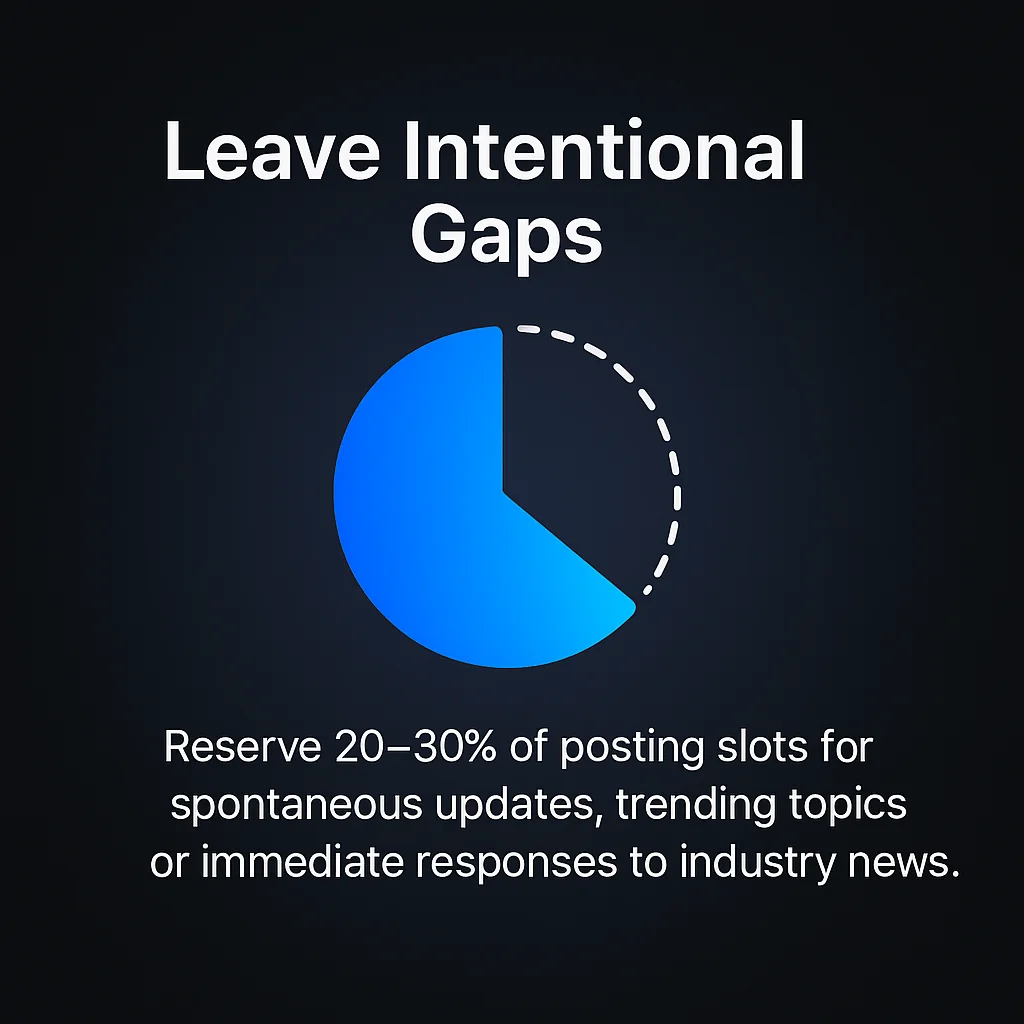
Configuring Platform-Specific Settings
Each social network has optimal posting formats and frequencies. Instagram favours high-quality visuals with concise captions. LinkedIn performs better with longer-form professional insights. Twitter rewards timely commentary and conversation. Configure your tool to respect these platform differences.
Customise publishing times per platform based on your audience analytics. Your LinkedIn followers might engage most during weekday mornings, whilst Instagram activity peaks evenings and weekends. Platform-specific timing prevents the “batch posted everywhere simultaneously” feel that screams automation.
Enable native features unique to each platform. Instagram first comments for links, Twitter threads, LinkedIn articles, and Facebook events require specific handling. Tools that support these features help content feel native to each platform rather than generically cross-posted.
AI-Powered Content Creation and Curation
AI tools now assist with content generation, hashtag research, and caption variations. These features accelerate creation but require careful implementation to maintain authenticity.
Using AI Writing Assistants Effectively
AI caption generators provide starting points, not finished content. Input your topic or article link, review suggested variations, then edit to match your voice. The AI handles structure and initial phrasing, you add personality and brand-specific details.
Hashtag research tools analyse trending and relevant tags for your content. They suggest combinations based on reach and competition levels. Use these suggestions as research, not gospel. Your branded hashtags and community-specific tags maintain authenticity better than purely algorithmic selections.
Content variation features help adapt single messages for multiple platforms. AI rewrites a LinkedIn post for Twitter’s character limit or creates Instagram caption alternatives. This preserves core messaging whilst respecting platform norms.
Content Curation Strategies
Automated content curation identifies relevant articles, studies, and resources to share. Set up keyword monitoring and source feeds, then review suggestions before scheduling. This keeps your content mix fresh without constant manual research.
Always add your perspective when sharing curated content. A quick comment explaining why the article matters or how it relates to your audience transforms generic sharing into valuable curation. This commentary is where your authentic voice shines through.
Balance original and curated content deliberately. A common ratio is 70% original, 30% curated. This maintains your unique voice whilst providing diverse value to followers. Track engagement on both types to refine your mix.
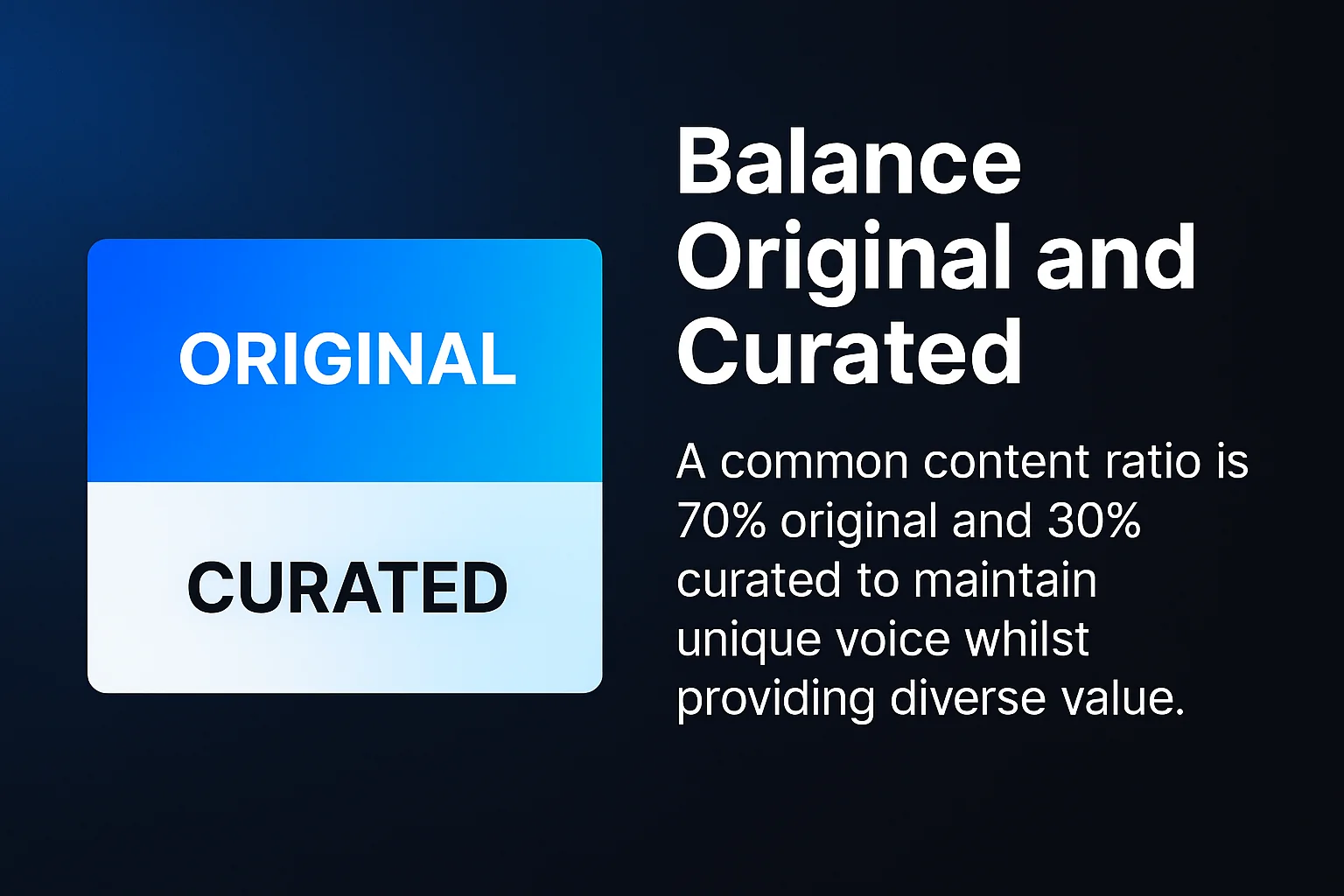
Maintaining Genuine Engagement Alongside Automation
Automation handles publishing, but genuine relationships require human interaction. The most successful strategies combine automated efficiency with intentional personal engagement.
Knowing When to Automate and When to Be Present
Automate routine content sharing, evergreen posts, and scheduled campaign materials. Handle responses to comments, direct messages, and crisis communications manually and immediately. This distinction preserves efficiency whilst maintaining relationship quality.
Set aside dedicated engagement time daily. Spend 15-30 minutes responding to comments, participating in relevant conversations, and acknowledging mentions. This consistent presence builds community even when most posting is scheduled.
Monitor real-time conversations related to your brand or industry. Social listening tools alert you to mentions and relevant discussions. Jump into these conversations personally rather than through automated responses. This is where authentic connections happen.
Personalising Automated Responses
Create response templates for common questions, but always customise before sending. Include the person’s name, reference their specific question, and add a personal touch. Templated doesn’t have to mean impersonal.
Use automation for initial acknowledgement, personal attention for resolution. An automated “Thanks for reaching out, we’ll respond within 24 hours” sets expectations. The actual response should come from a human who can address nuances.
Avoid automated responses for sensitive topics, complaints, or complex questions. These situations require empathy, judgement, and often creative problem-solving that automation can’t provide. Flag these interactions for manual handling.
Mixing Scheduled and Real-Time Content
Interrupt your scheduled content for timely updates. Breaking industry news, trending topics, or immediate business announcements should go live immediately, not wait for the next queue slot. This responsiveness proves humans are paying attention.
Participate in platform-specific features that require real-time presence. Instagram Stories, Twitter Spaces, LinkedIn Live, and Facebook Live all create authentic moments that scheduled posts can’t replicate. These features show the humans behind the brand.
Share spontaneous behind-the-scenes content between scheduled posts. Quick photos from events, team celebrations, or works-in-progress add authenticity that polished, pre-scheduled content often lacks.
Measuring Success Beyond Basic Metrics
Analytics from automation tools provide data, but authentic success requires looking beyond vanity metrics to meaningful engagement indicators.
Tracking Meaningful Engagement
Focus on conversation quality over follower counts. Comments that ask questions, share experiences, or continue discussions indicate authentic engagement. Track these interactions even when they don’t translate directly to likes or shares.
Monitor sentiment alongside engagement volume. Tools that analyse comment tone reveal whether your content resonates positively. Negative sentiment despite high engagement signals authenticity problems.
Measure click-through rates on links within posts. This shows whether your content provides enough value that people want to learn more. Low clicks despite high likes might indicate superficial engagement.
Identifying Authentic vs Performative Engagement
Look for patterns in who engages repeatedly. Regular commenters and consistent shares from the same accounts indicate genuine community building. One-time interactions from random accounts suggest algorithm-driven exposure without real connection.
Analyse the depth of conversations in comments. Multi-turn discussions where people respond to each other, not just your brand, show authentic community formation. This matters more than raw comment counts.
Track how often followers mention your brand unprompted. Social listening reveals conversations where people recommend you without tags or official posts. This organic advocacy indicates authentic relationships.
Adjusting Strategy Based on Performance
Review analytics weekly to spot trends early. Which content types generate discussions versus passive consumption? Shift your content mix towards engagement-generating formats whilst maintaining variety.
Test posting times and frequencies using your actual audience data. Your optimal schedule might differ significantly from generic best practices. Use automation tools’ analytics to refine timing based on your specific follower behaviour.
Experiment with content variations systematically. Change one variable – image style, caption length, hashtag strategy – and measure impact. This controlled testing reveals what authentically resonates with your audience.
Common Pitfalls in Social Media Automation
Even well-intentioned automation strategies can undermine authenticity when certain mistakes occur. Recognising these pitfalls helps you avoid them.
Over-Automation Warning Signs
Your feed feels like a content machine rather than a brand with personality. Every post follows the same template, timing is mechanically consistent, and responses feel scripted. This rigid consistency paradoxically makes you seem less reliable because you’ve lost human variability.
Engagement drops despite consistent posting. This indicates your automated content isn’t resonating. Audiences recognise and disengage from content that feels mass-produced or disconnected from current events.
You’re scheduling months ahead without flexibility. Whilst planning is valuable, over-scheduling leaves no room for spontaneity or responsiveness. The world changes, and your social media presence should reflect that reality.
Cross-Posting Mistakes
Identical content posted simultaneously across all platforms screams automation. Each platform has distinct audiences, formats, and engagement patterns. Generic cross-posting wastes each platform’s unique strengths.
Platform-inappropriate formatting damages credibility. Instagram posts with “link in bio” published to Twitter, or Twitter threads published as single LinkedIn posts, show you’re not paying attention to platform norms.
Ignoring platform-specific engagement opportunities loses authentic connections. Instagram Stories, Twitter polls, LinkedIn articles, and Facebook Groups require platform-native participation that simple cross-posting misses.
Neglecting Community Management
Automating posting but ignoring comments creates a one-way broadcast channel. Social media requires conversation, not just content distribution. Unanswered comments and ignored mentions signal you’re not actually present.
Delayed responses to time-sensitive questions damage trust. Automation tools notify you of new interactions. Failing to act on these notifications defeats the purpose of social media as a communication channel.
Missing opportunities to join relevant conversations limits reach. Social listening identifies discussions where your expertise adds value. Participating in these conversations builds authentic authority that scheduled posts alone can’t achieve.
Advanced Automation Strategies
Once basic automation is running smoothly, advanced techniques can enhance authenticity whilst increasing efficiency further.
Dynamic Content Personalisation
Some tools allow variable insertion in scheduled posts. You can schedule a post template that automatically adjusts details based on timing, location, or recipient. This creates the feel of personalised content whilst maintaining automation efficiency.
User-generated content campaigns leverage automation for curation and resharing. Set up keyword monitoring for your branded hashtags, review submissions, then schedule the best user content with proper credit. This showcases community whilst reducing content creation burden.
Triggered content responds to specific conditions. When someone joins your email list, an automated welcome sequence might include social media invitations. When blog posts publish, automation tools can create and schedule related social content. These triggers maintain consistency without manual intervention.
Integration with Broader Marketing Systems
Connect your social media automation tool with your CRM, email platform, and analytics systems. This integration allows coordinated campaigns where social content complements email messaging and responds to customer behaviour.
Automated reporting sends social media performance data to stakeholders without manual compilation. Schedule weekly or monthly reports that track key metrics, campaign performance, and engagement trends. This keeps everyone informed whilst freeing time for strategic work.
RSS feed integration automatically shares new blog content, podcast episodes, or YouTube videos to social platforms. Configure this carefully to add unique commentary rather than just republishing titles and links.
Team Workflow Optimisation
Develop approval workflows that match your team structure. Content creators draft posts, managers review for brand alignment, executives approve major announcements. Automation tools track this process and notify relevant people at each stage.
Create team guidelines within the tool itself. Standard operating procedures for content creation, response handling, and crisis management should live where the work happens. This ensures consistency even as team members change.
Use automation analytics to optimise team time allocation. If data shows certain content types consistently underperform, reallocate effort towards what works. Let efficiency metrics guide strategic decisions about where human creativity provides the most value.
Preparing Your Strategy for Future Developments
Social media platforms and automation capabilities continually develop. Building flexibility into your approach ensures long-term authenticity and effectiveness.
Emerging Platform Considerations
New social platforms appear regularly, each with unique features and audiences. Your automation strategy should accommodate adding new networks without complete overhaul. Choose tools with strong track records of adding platform support.
Platform algorithm changes affect what content performs best. Automation tools that provide algorithm insights and adaptation recommendations help you stay effective as platforms evolve. Regular strategy reviews ensure your automated content aligns with current platform priorities.
Video and interactive content formats increasingly dominate social media. Ensure your automation tools support these formats or integrate with creation tools that do. Static image scheduling alone won’t sustain engagement long-term.
AI Development Impact
AI content generation capabilities improve rapidly. Stay informed about new features in your automation tools, but maintain human oversight. AI should enhance your authentic voice, not replace it.
Audience expectations for AI-generated content are evolving. Transparency about AI assistance may become important for maintaining trust. Consider how you’ll handle disclosure as regulations and norms develop.
Advanced personalisation through AI will enable more sophisticated automation. Content that adapts to individual follower interests whilst maintaining brand consistency represents the next frontier. Prepare your content frameworks to leverage these capabilities whilst preserving authenticity.
Continuous Improvement Process
Schedule quarterly reviews of your automation strategy. Assess what’s working, what feels stale, and where manual intervention adds the most value. Adjust your automation rules and content mix based on these insights.
Stay connected to your audience through regular check-ins. Surveys, polls, and direct conversations reveal how your automated content lands. This qualitative feedback complements quantitative analytics.
Invest in ongoing team training as automation tools add features. New capabilities only enhance authenticity if your team knows how to use them effectively. Regular skill development ensures you’re maximising your tool investment.
Moving Forward with Automated Authenticity
Social media automation doesn’t require sacrificing authentic connections. The right tools, thoughtfully configured, amplify your ability to maintain consistent presence whilst preserving genuine engagement.
Start by selecting a tool that matches your team size and content strategy. Test during the free trial period, focusing on interface usability and whether features align with how you actually work. Build your content framework carefully, establishing categories and templates that provide structure without rigidity.
Implement automation gradually. Schedule a portion of your content whilst maintaining manual posting for time-sensitive updates and responsive engagement. This balance lets you learn what automation handles well and where human creativity adds irreplaceable value.
The marketers achieving the best results treat automation as an amplifier of their strategy, not a replacement for authentic presence. They schedule consistent content, but they show up personally for conversations. They use AI suggestions as starting points, but they edit everything to sound like themselves. They track analytics religiously, but they adjust based on qualitative community feedback as much as quantitative metrics.
Your authentic voice remains your most valuable asset. Automation simply ensures that voice reaches your audience consistently, even during your busiest weeks. That’s efficiency worth embracing.


